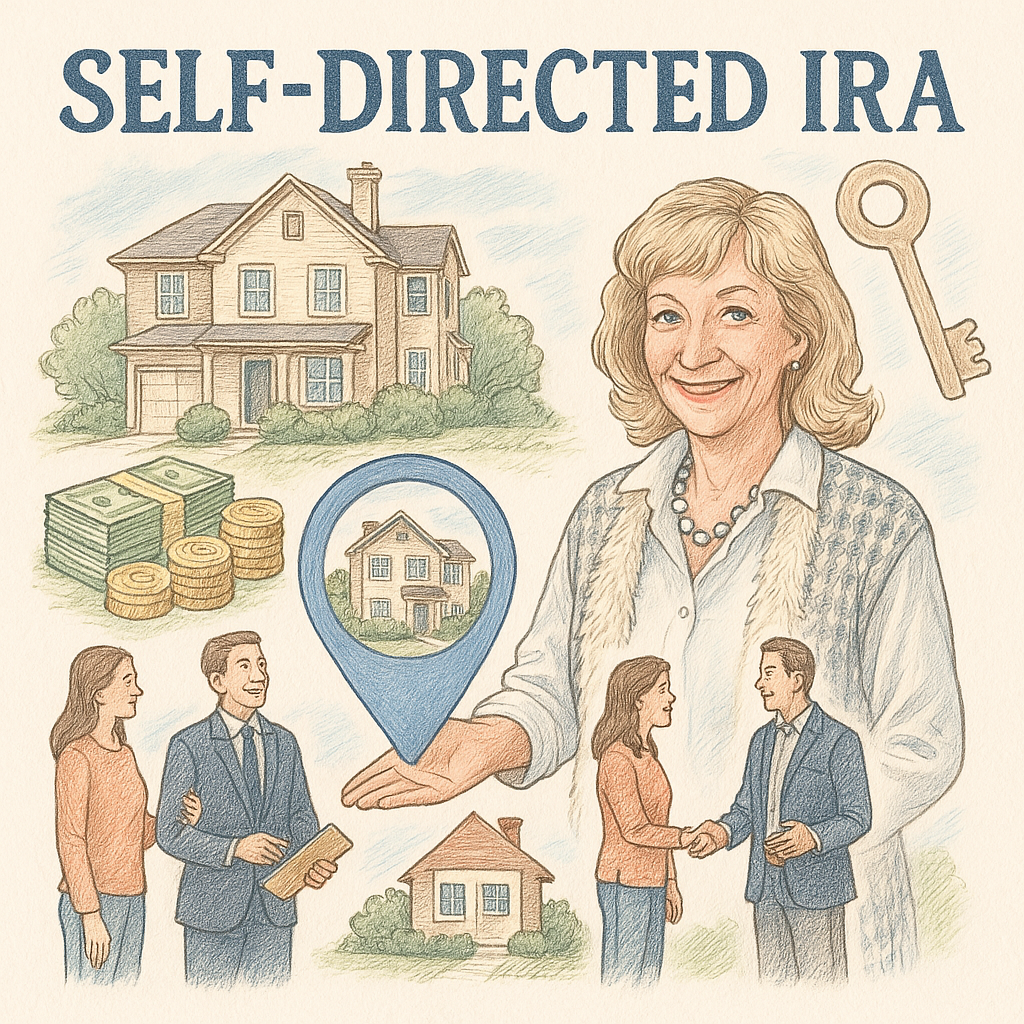HOME BUYING GUIDE: USING A SELF-DIRECTED IRA TO PURCHASE REAL ESTATE
Investing in real estate is a popular choice for diversifying retirement portfolios, and Self-Directed IRAs (SDIRAs) offer a unique avenue for such investments.Individuals can leverage SDIRAs to invest in properties like single-family homes, rental accommodations, commercial spaces, and more.
Before jumping in, it's crucial to recognize that while SDIRAs offer substantial benefits, they come with unique challenges and strict IRS rules.

Investing in real estate using a Self-Directed IRA (SDIRA) allows individuals to grow their retirement funds through property investments while benefiting from tax advantages. This approach is popular in Sacramento, a thriving real estate market. However, it requires understanding IRS rules and effective management to avoid penalties.
Ensure compliance and successful investment by seeking professional advice, understanding IRS regulations, and conducting thorough market due diligence.
- 🏠 A Self-Directed IRA lets you invest in real estate, offering tax benefits similar to traditional IRAs.
- 📑 Set up an SDIRA with a custodian and fund it through contributions, transfers, or rollovers while observing IRS limits.
- 🔍 Understand Sacramento's market and IRS rules when selecting properties. Non-recourse loans may be necessary for financing.
- 🚫 Follow strict IRS rules to avoid penalties, such as not engaging personally with IRA-owned properties.
- 📈 Benefits include potential high returns and diversification, though risks like market shifts and cash flow issues exist.
- 🛠 Proper property management and strategic planning can mitigate risks and improve investment outcomes.
- 👥 Consult financial experts familiar with SDIRA and local market trends for sound investment decisions.
A Self-Directed IRA (SDIRA) empowers account holders to invest in a broader range of assets beyond the typical IRA offerings like stocks, bonds, and mutual funds. This includes the opportunity to directly hold real estate, such as rental properties and commercial buildings, within the retirement account. The property itself is owned by the SDIRA, and any income or expenses related to the investment flow directly through the IRA.
Investing in real estate through an SDIRA allows for tax-deferred or tax-free growth, similar to traditional IRA mechanisms. However, the process involves setting up an SDIRA account, funding it appropriately, and ensuring IRS compliance throughout the investment management.
The first step in using an SDIRA for real estate investment is setting up the account, which can be a Traditional IRA, Roth IRA, or even an Individual 401(k). The choice of account type will influence the tax benefits received, such as tax-deferred growth for Traditional IRAs or tax-free growth for Roth IRAs upon withdrawal.
Once the SDIRA is established, funding can occur through transfers, rollovers, or annual contributions. Investors must ensure compliance with IRS contribution limits and maintain the tax-advantaged status of the account. For detailed guidance, speaking with an IRA custodian can clarify tax advantages and account types suited for real estate investments.
When selecting real estate investments, due diligence and an understanding of the Sacramento market can help in identifying potential opportunities. Investors should align their investment choices with IRS guidelines, ensuring the intended use and occupants comply with SDIRA regulations.
Once a property is found, investors can opt for direct purchases, partnerships, or financing with non-recourse loans. Non-recourse loans are particularly important as they allow the purchase without personal credit reliance and align with IRA restrictions, although they might incur Unrelated Business Income Tax (UBIT) on debt-financed portions.
Strict adherence to IRS rules is paramount when managing real estate investments through SDIRAs. These regulations prohibit any personal benefit from the property, including residing in the home or renting it to disqualified persons such as family members. All property-related expenses must be settled using IRA funds.
Understanding these restrictions helps protect the tax-advantaged status of the IRA. It is advisable to employ professional management or custodian services to ensure all compliance is handled adequately, avoiding prohibited transactions or penalties.
Entering the real estate market with an SDIRA offers several benefits, such as the potential for higher returns, diversification from the volatile stock market, and tax advantages. Investors can capitalize on areas with high growth potential, such as urban developments in Sacramento, to secure returns against market fluctuations.
Despite the benefits, investment risks include market fluctuations, potential negative cash flow, and management challenges. Selecting strategic locations and implementing efficient tenant management are key in mitigating these risks. Investors must be vigilant in maintaining liquidity, given that real estate assets can be illiquid, impacting the ability to quickly access funds if needed.